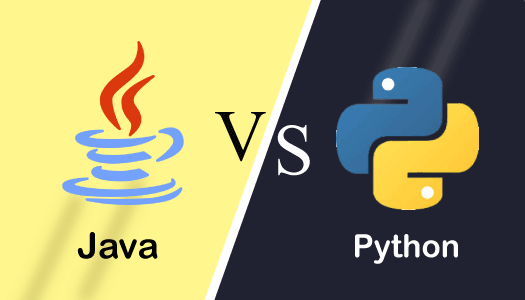Which is Better Java or PythonThe two most widely used programming languages are Python and Java. These are popular, high-level, general-purpose programming languages. Developers use Java to create desktop and online apps, while Python is used in the development of data science and machine learning applications. Choosing between the two is tough. This section will contrast Python with Java to see which is a superior programming language. 
JavaLike C++, Java is an object-oriented language. However, its sophisticated and streamlined features set it apart from C++. You may access it for free. It is an independent, concurrent, class-based language. The following application kinds are best developed with Java as the programming language of choice:
PythonPython is a high-level, object-oriented programming language. It reduces the line of code that also minimizes the cost of product maintenance. We use the Python programming language to develop the following types of applications:
Java Vs. PythonPython is a dynamically typed, interpreted programming language, which implies that variables don't need to be declared. However, because Java is a statically typed and compiled language, variables must be declared explicitly. Python's beautiful syntaxes increase productivity and speed up the development of applications. Java has intricated, long, and difficult-to-remember syntax. Python is more productive than Java in part because it is somewhat shorter. In Java, the implementation of code must be inside the class. While in Python, we simply start writing code.
Comparison ParametersJava and Python languages have some similarities and differences that puzzle us to select one out of the two. Let's compare both programming languages on the basis of the following factors and see which one is better. PerformanceUnlike Python, Java is a statically typed programming language that facilitates easier compilation. Through JIT, the JVM accelerates code execution. One benefit of JIT is its faster conversion time from byte code to native machine code. On the other hand, Python programmers used many programming language implementations to speed up code execution. Developers employ Jython, which translates Python code into Java bytecode, and Cython, which translates Python code into C and C++, as tools to speed up execution. It's also employed to maximize Python programs' speed of execution. Code ReadabilityTo make the code easily understood by another programmer, it must be in a legible format. Therefore, code readability is specifically emphasized in both Python and Java. Many developers use Python because it allows for succinct code and eliminates superfluous code that facilitates application maintenance. With Java, developers may create apps with more time and effort; every new version of Java includes more tools that simplify development by organizing software programs using modules. An additional design for the modules is a group of codes. As a result, the engineers have more time to comprehend these novel features-a laborious task fully. Standard LibraryPython comes with a huge, feature-rich standard library. The library saves both time and programming effort. The developer can select from more than 130000 (approximately) libraries for various uses. Text processing, picture processing, web and testing frameworks, and other features are included in the Python package. Java offers libraries as well, but they are based on the particular requirements of the developer. There are much more libraries in Python than in Java. Learning CurvePython's straightforward, expressive syntax makes it simpler for newcomers to begin writing code. It does not need a variable declaration prior to use; it recognises its kind on its own. As a result, Python has a simple learning curve. However, Java requires us to create more code to convey ideas and complete common activities. In Java, a variable cannot be used unless its type is declared. Many novices choose to create web and mobile applications using Java. PopularityAccording to a Stackoveer report from 2018, Python is the programming language with the quickest growth rate after C++. Following the release of JavaScript, there was a popularity war between the two languages. Java, on the other hand, was a popular option among programmers. SyntaxThe syntax in Python is simple and easy to learn. While in Java syntaxes are complex, large, and hard to remember. ConclusionWe have contrasted Python with Java based on a number of factors. It is tough to decide which is superior, though. A programmer's choice of language is determined by the kind of application they wish to develop. Examine your program and its needs, decide on a language, then use it. Python might be a suitable option if you lack experience with programming. However, it will help if you have some familiarity with object-oriented programming in C++ if you also want to study Java. The Python language has a very promising future. Therefore, we advise you to begin using Python. This programming language is simple and engaging.
Next TopicHow to Update Java
|
 For Videos Join Our Youtube Channel: Join Now
For Videos Join Our Youtube Channel: Join Now
Feedback
- Send your Feedback to [email protected]
Help Others, Please Share









